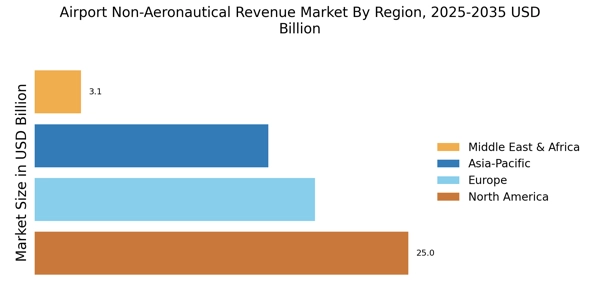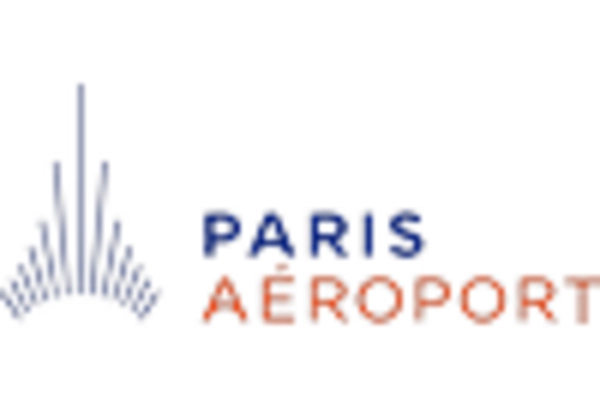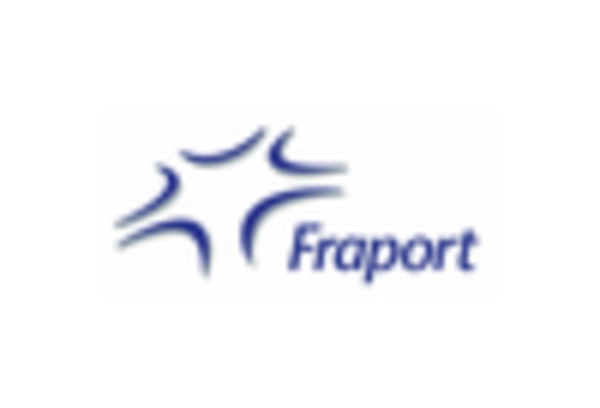Increased Passenger Traffic
The Airport Non-Aeronautical Revenue Market is experiencing a notable surge in passenger traffic, which is a primary driver of revenue growth. As air travel becomes more accessible, airports are witnessing a steady increase in the number of travelers. This influx not only enhances aeronautical revenues but also significantly boosts non-aeronautical income through retail, dining, and other services. For instance, airports that have reported a 10% increase in passenger numbers have simultaneously seen a corresponding rise in non-aeronautical revenue by approximately 15%. This trend suggests that as more passengers traverse through airports, the potential for ancillary revenue generation expands, thereby reinforcing the importance of optimizing non-aeronautical offerings.
Focus on Customer Experience
The Airport Non-Aeronautical Revenue Market is increasingly prioritizing customer experience as a key driver of revenue. Airports are recognizing that enhancing the overall passenger journey can lead to increased spending on non-aeronautical services. Initiatives such as comfortable lounges, entertainment options, and wellness facilities are being implemented to create a more enjoyable environment. Data suggests that airports investing in customer experience improvements can see non-aeronautical revenue growth of up to 18%. This focus on passenger satisfaction not only fosters loyalty but also encourages repeat visits, thereby contributing to sustained revenue growth in the non-aeronautical sector.
Expansion of Retail and Dining Options
The Airport Non-Aeronautical Revenue Market is increasingly characterized by the expansion of retail and dining options within airport premises. Airports are recognizing the potential of enhancing passenger experience through diverse shopping and dining experiences. Recent data indicates that airports with a wider array of retail outlets and dining establishments have reported non-aeronautical revenue growth rates of up to 20%. This expansion not only caters to the evolving preferences of travelers but also encourages longer dwell times, which can lead to increased spending. Consequently, airports are investing in partnerships with renowned brands and local businesses to create a unique shopping and dining environment, thereby driving non-aeronautical revenue.
Technological Advancements in Services
The Airport Non-Aeronautical Revenue Market is being propelled by technological advancements that enhance service delivery and operational efficiency. Innovations such as mobile applications, self-service kiosks, and contactless payment systems are transforming the passenger experience. These technologies not only streamline operations but also facilitate personalized marketing strategies that can significantly boost non-aeronautical revenue. For example, airports utilizing data analytics to understand passenger behavior have seen an increase in targeted promotions, leading to a potential revenue uplift of 12%. As technology continues to evolve, its integration into airport services is likely to play a crucial role in maximizing non-aeronautical revenue streams.
Strategic Partnerships and Collaborations
The Airport Non-Aeronautical Revenue Market is witnessing a trend towards strategic partnerships and collaborations that enhance revenue potential. Airports are increasingly collaborating with airlines, retailers, and service providers to create synergistic opportunities that benefit all parties involved. These partnerships can lead to innovative service offerings and promotional campaigns that attract more passengers and encourage spending. For instance, airports that have established partnerships with local businesses have reported a 15% increase in non-aeronautical revenue through co-branded initiatives. Such collaborations not only diversify revenue streams but also enhance the overall passenger experience, making them a vital component of the airport's revenue strategy.


















Leave a Comment